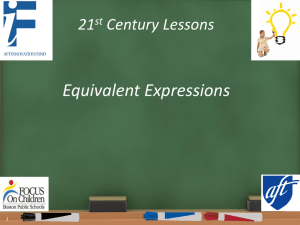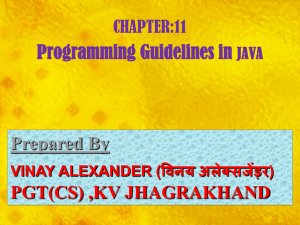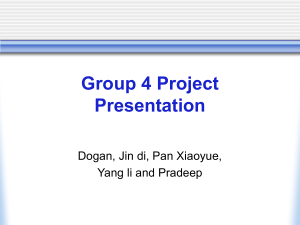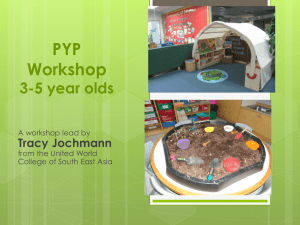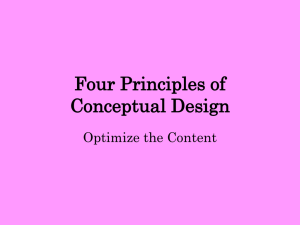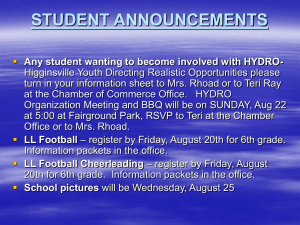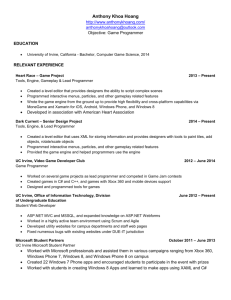14 Programming Methodology
advertisement
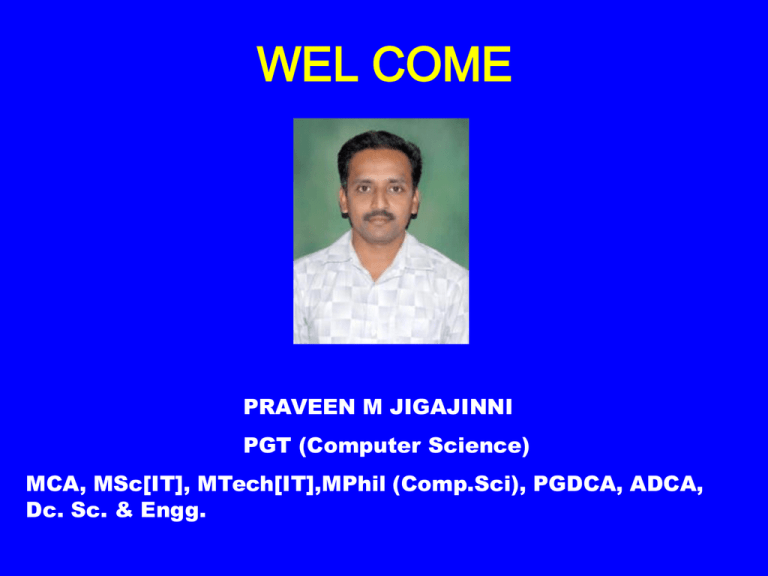
WEL COME PRAVEEN M JIGAJINNI PGT (Computer Science) MCA, MSc[IT], MTech[IT],MPhil (Comp.Sci), PGDCA, ADCA, Dc. Sc. & Engg. Reference Book CLASS XI By Sumita Arora CHAPTER 11 PROGRAMMING METHODOLOGY INTRODUCTION • Computerized information systems are developed to provide computer solutions to user problems. • The software should be designed effectively so as to meet its objectives of user satisfactions. INTRODUCTION The Software designing involves mainly two things 1. Program Structure. 2. Program Representation. PROGRAM STRUCTURE • The program structure is decided using top-down structure or any other popular approach. • The main task is divided in to clear logical sub tasks there by deciding about the sub routine and global variables information hiding etc. PROGRAM REPRESENTATION The program representation refers to its presentation style so that the program becomes readable and presentable. A program which is easily understood can be checked for errors if any, and easily modified. It is learnt that normally 60-75% of time and 90% cost of the program is spent on testing, debugging and modifying it. STYLISTIC GUIDELINES • Developing good program is skill and writing good program is a quality habit. STYLISTIC GUIDELINES • Developing good program is skill and writing good program is a quality habit. Meaningful Names for Identifiers Assign Meaningful names for identifiers viz. variables, constants, functions etc… Do not use similar looking names like viz. manager, manage Always assign names to scalar constants when it helps in clarity and readability. Ensure clarity of Expressions Expressions carry out the specified action (s). Thus the must be clearly understood by the users. Clarity of expressions should not be compromised. Avoid programming tricks whose intent Will not be obvious to reader. Never sacrifice Clarity of expressions even if changed expressions may get minor gain in machine time. Use Comments and Indentation Comments play a very important role as they provide internal documentation of a program. Always insert prologues that comment in the beginning of a program. Insert Blank Lines and Spaces The insertion of blank lines and spaces enhances the program readability. they are to separate declaration blocks and comments. Inserted before label, const. variable declarations. Pretty printing When program formatting is done to make program more readable, it is called pretty printing. Characteristics Of Good Program Efficient and effective User friendly Self –documenting Code Reliable Portable Stages Of Program Development Crack the problem Code the algorithm Compile the program Execute the program Robustness The ability of a program, to recover following an error and to continue operating within its environment is called robustness. Guard code The code which can handle exceptional data errors and operational errors is called guard code. Types of Error 1.Compile-Time Error Syntax error Occurs when rules of programming are misused i.e when grammatical rule of c++ are violated. Syntax refers to formal rules governing the construction of valid statements in a language. Semantics errors occur when statements are not meaningful. Run-time Errors Error that occur during the execution of a program are run time errors. These are harder to detect errors. Some run time errors stop the execution of the program which is then called program “crashed” or “abnormally” terminated. Logical Errors Sometimes even if you don’t encounter any error during your compile time and run time , your program does not provide the correct result. This is because of programmer’s mistaken in analysis of program she or he is trying to solve. such errors are called logical errors. Problem solving methodology and techniques Understanding the problem well. Analyse the problem. Design the problem by Deciding the step by step solution. Breaking down solution into smaller steps. Code the program. Test and debug your program. Complete your documentation. Testing and Debugging Testing is the process of finding errors in a program, and debugging is the process of correcting errors found during testing process. Documentation Documentation refers to written descriptions specification ,design ,code and comment , internal and external to a program more understandable , readable and more easily modifiable. Modules of Documentation Modules makes information more easily accessible to the specific user for which they were prepared , and reduce the cost of production and maintenance. The documentation modules are generally referred to as manuals . In detail it depends upon 1. Complexity of system 2. Technical sophistication of user 3.People involved in development and use List of Manuals User manual Input Preparation Manual Operation Manual Equipment Manual Programmer Manual System Manual Standards Manual User documentation info General descriptions Run flow and description Logic flow Program testing's File description Record layout Output specification File disposal Error messages Security concerns Restart and recovery Programmer’s documentation The programmer’s Manual provides the technical part of documentation. This manual is essential because it is the basis of maintenance. It is of two types, 1.External documentation. 2.Internal documentation. What is external documentation? The external documentation of a program consists of the written information that is outside the body of the source code. It may contain specifications of the history of the program’s development and subsequent modification. What is internal documentation? The internal documentation includes comments , self documenting code and program’s formatting . The goal of this features to make program readable, understandable , and easily modifiable. What is self documenting code? It is a code that uses meaningful names for constants, variables & subprogram Identifiers to clarify their meaning in the program. Program maintenance Program maintenance refers to the modification of a program , after it has been completed . There are four kind of maintenance. Corrective maintenance Some errors might show up because of some unexpected situations , untested areas these errors are called Corrective maintenance. Program maintenance Adaptive maintenance To accommodate changing needs , time to time , maintenance is done and is called adaptive maintenance. For example new government may need to process new reports or market conditions etc. Program maintenance Preventive maintenance If possible errors could be anticipated , before they actually occur, the maintenance could be done to avoid them and the system down time( time for which system remains out of order) can be saved. This type of maintenance aims at preventing errors is called program maintenance. How to develop information that are easy to maintain? 1.The systems should be planned with an eye on the future. 2.User specification should be correct. 3.The system should be modular 4.Documentation should be complete. 5.Standereds should be followed. 6.Testing should be through. How to develop information that are easy to maintain? 7.Adeqate time should be allowed for development cycle. 8.Attetionshould be paid to end-users , health and human factors should be considered. 9.The development team should be fully aware at the relationship of system design and system maintenance. THANK YOU

